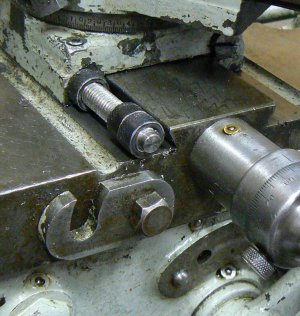- Joined
- Feb 7, 2014
- Messages
- 350
Just some confusion in my old brain, but up there in the LL picture - If you use a standard 60deg. ground tool and set the compound at 27 or 26, or something like the picture title says, wouldn't you screw up the angle being cut on the left side of the tool, too? Half a degree is a wash, but several degrees starts to make a lopsided thread. Wouldn't it be better to have a tool ground with clearance on the trailing side. You guys with fancy carbide threading tools would have a hard time doing that, but those of us with more modest means and HSS threading tools can grind whatever angle we want... And I have done that by mistake


